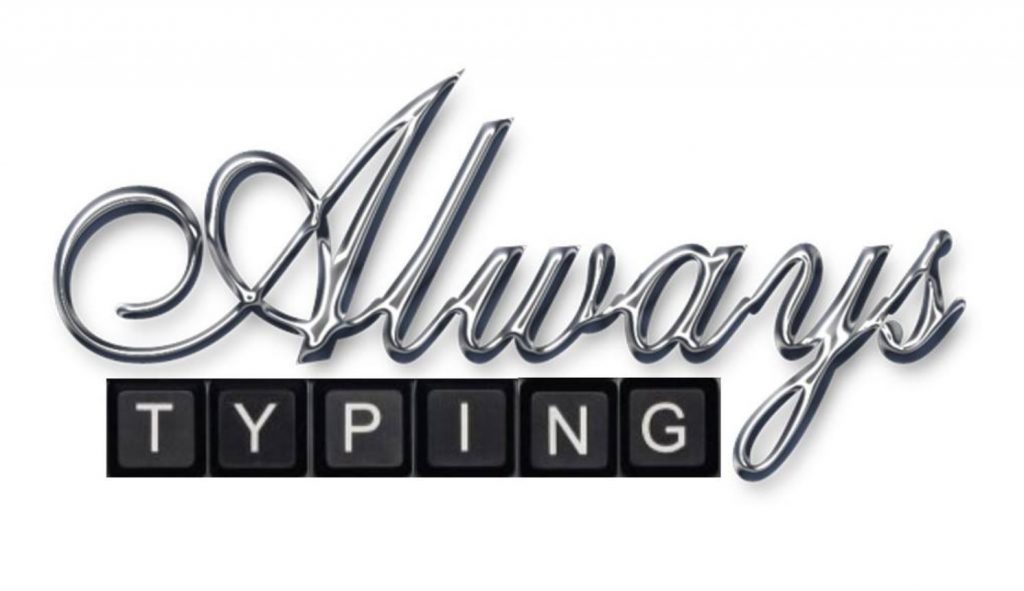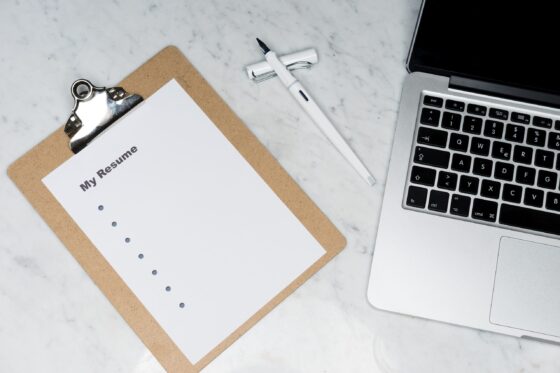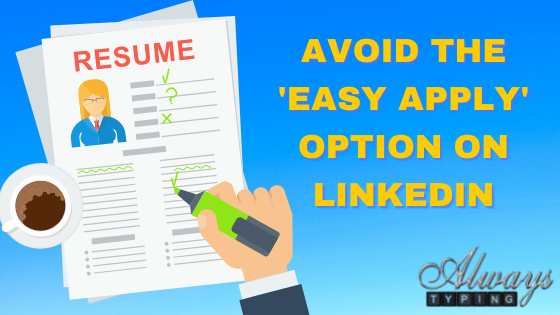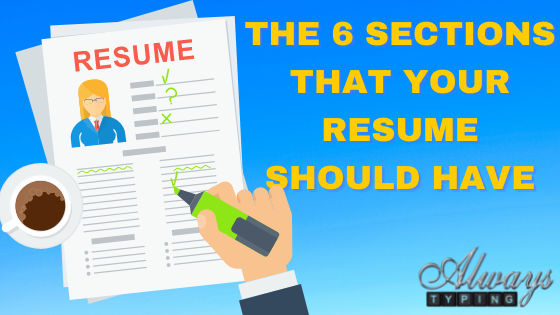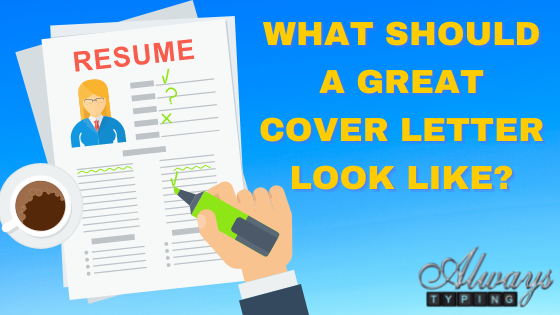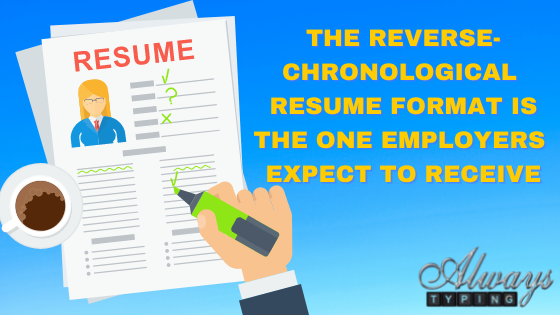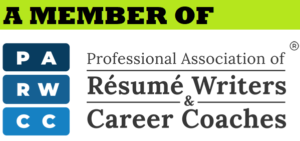People who hire a professional resume writer increase their chances of being hired by 32%. One reason for this is that professional resume writers know how to navigate resume writing rules and the ATS so your resume shines. It’s hard to write a professional resume if you’re wondering should a resume be in the past tense or what sections to include. A professional knows the tips and tricks to make your resume the best version it can be. However, it’s still important for you to understand the strategy behind a resume. In this article, we cover resume tenses and why they’re important. Why Is Resume Tense Important? First, resume tense is important because it lets the reader know if you are currently doing something or if it’s in the past. Using present and past tense throughout your resume helps to weave your story in a compelling way that keeps readers engaged. Second, it’s a must for consistency. One of the big differentiators between a professionally written resume and one that is not is consistency. Using the same tense for each section is a must to make your document as professional as possible. Should a Resume Be in the Past Tense? There are many debates about what tense a resume should be in. Some people wonder “should I use past tense in my resume?” while others contemplate “shouldn’t my resume be in the present tense?” The answer is…you should use both. Writing a resume is a strategic process where you target your next job while also highlighting your accomplishments and strengths. So, it makes sense that you would use past tense for your previous jobs and accomplishments. This is because they have already happened and aren’t a current or ongoing part of your career. Example Past Tense Verbs Here is a list of common past tense verbs used in resumes: Managed Maintained Oversaw Led Directed Conceptualized Organized Coordinated Planned Of course, there are many more. A professional writer can help you to diversify the language used in your document so it isn’t repetitive or boring to read. When Should a Resume Be in the Present Tense? On your resume, the current job tense is always present. This is because you are currently and actively completing these functions. However, when writing the accomplishments for this section, you must use the past tense. For example, if you won an award three years ago, it wouldn’t make sense to have it in the present tense. It’s completed at this point and is a part of your past. Additionally, when writing a professional summary for the top of the resume, you should use the present tense. This is where you communicate your value and strengths, so it should be current. Example Present Tense Verbs Here are a few present tense verbs used commonly in resumes: Direct Improve Advise Reduce Strategize Collaborate Supervise Train Prioritize This list is not exhaustive. It’s best to use as many different verbs as you can throughout your resume. Present Tense Resume Example For those interested in seeing present tense verbs in action, here is a short example: Direct daily operations for team of 15 while defining strategies and business plans. Lead team in executing projects, initiatives, and recommended upgrades. Arrange weekly meetings to discuss progress and brainstorm new ideas. Collaborate with leaders to plan various events to increase customer and employee engagement. Past Tense Resume Example And here is the past tense example: Oversaw talented team of 30 in delivering large-scale projects to improve processes, systems, and procedures. Partnered cross-functionally with departments to execute strategies and plans focused on operational excellence, cost savings, and business expansion. Slashed expenses by implementing internal controls and budget procedures. Mixed Tense Resume Example A mixed-tense example would be a present role with accomplishments. For example: Lead daily functions while supervising all accounts receivable and payable activities. Reconcile accounts, identify discrepancies, and consolidate accounts. Monitor internal controls and expenses to maintain profit margin. Saved $500K in annual costs by eliminating external payroll firm and moving functions in-house. Spearheaded improvement project to assess accounting controls and processes, identify areas for improvement, and recommend changes to executive leadership. As you can see, the paragraph explaining the daily functions is in the present tense. This area includes activities you do every day or on the regular. The accomplishments are achievements you have already completed, so they are in the past tense. Why You Shouldn’t Use Plural or Gerund Your resume is written in first-person, with an assumptive “I” at the beginning of each sentence. When you start each sentence with a verb, it should be singular. Adding -s, -es, or -ing to the verbs, in the beginning, can throw off the entire resume strategy and how it reads. Adding an ending to verbs throughout a sentence is okay, like in the examples above. The reason for this is that you want your resume to read like you are speaking directly to the person looking at it. “I managed this” or “I directed that.” It doesn’t make sense to include -s because you wouldn’t say “I manages this” or “I directs that.” Get Help Today Writing Your Resume This article answers the question “should a resume be in the past tense?” We hope you have a better understanding of when to write your resume in past or present tense. We know it is confusing at times to know all the resume writing rules. That’s why we are here to help! Don’t spend your time wondering what tense to use in your resume, leave it to the professionals. Contact us today to get started on your new career path.
Functional Resume: How to Write One and When to Use It
On average, 118 people apply for a single job opening. When you think about that, it’s clear why having a great resume that showcases your strengths is a must if you want to get your dream job. Of course, what a great resume looks like varies from person to person. While hiring managers expect to see a reverse-chronological resume, some job seekers need a functional resume. If you think you need a functional resume, then keep reading. You’ll learn more about what it is, when to use it, and how to write it. What Is a Functional Resume? There are three widely accepted resume formats: chronological, functional, and hybrid (sometimes called combination). The chronological resume lists your employment history in reverse chronological order. A functional resume, often called a skills-based resume, focuses on skills and achievements instead of dates. And the combination resume has both chronological and functional sections. Click to see a functional resume example. When Should You Use a Functional Resume? There are many different reasons someone would need a functional resume. The most common reason is that you have gaps in your work history. This could be due to several occurrences, but it makes your resume look less than appealing nonetheless. Another common reason is people who have held too many jobs. For example, say you have worked for a bunch of different companies in the same type of role and don’t want to look like a job hopper. You could use a functional resume to focus on the skills rather than where you have worked and for how long. Additionally, career changers often turn to a functional resume. When changing to a new career, you don’t have the experience they want to see. But…you probably have more than a few of the skills needed. This type of resume focuses on those so you can make yourself an attractive candidate in a new industry. It’s important to note that functional resumes are not ideal and should only be used when absolutely necessary. Many recruiters are wary of functional resumes and feel job seekers have something to hide when using them. How to Write a Functional Resume: The functional resume format is a bit different from the traditional reverse-chronological document. Contact Information At the very top of your resume, you must have your contact information. This seems like a given, but it’s not. You have to have a way for the hiring manager to contact you! When creating this section, include: First and last name Email (please make it a professional one) City, state, and zip code Phone number LinkedIn link And that’s it! Many recruiters have turned to social media to beg job applicants not to put their entire address on resumes anymore. It creates a host of security concerns for companies. There have also been instances of discrimination against job seekers based on their address. Create a Summary Directly following your contact information, you should have a high-level professional summary. This should be an introduction to the reader that captures their attention about who you are and what you bring to a company. An example summary: Highly ambitious sales professional with vast experience in forging lasting relationships with key clients and account holders to maximize sales and revenue. Leverage written and verbal communication skills to drive client engagement and retention. Detail-oriented individual able to collaborate with teams to facilitate culture of cohesion and accountability. Highlight Your Strengths This is the star of the show for a functional resume. You want to showcase your strengths and competencies in this section. It should be the largest one on the document. You should list each skill with a few examples or a paragraph about it. Here is an example: Communications: articulate communicator able to convey vital information to leadership while applying interpersonal skills to build relationships with clients. Alerted leadership of ongoing documentation error causing clients to receive inaccurate account closure notices, leading to 30% reduction in escalated calls. Engaged with key clients, forging strong relationships and influencing decision-making to generate $15K in additional revenue. Work History When writing your work history, you want to keep it short and to the point. You should only list the past 10-15 years of experience. If you have held several roles with the same title, it’s ok to combine them to make it less obvious. It should look like this: Great Companies, Somewhere, VA: Sales Agent (2012-2022) Other Great Companies, Everywhere, VA: Sales Associate (2008-2012) If you have large gaps, you should leave the years off completely. It would look like this: Great Companies, Somewhere, VA: Sales Agent Other Great Companies, Everywhere, VA: Sales Associate The Best Company, Nowhere, VA: Sales Representative Credentials Your credentials section will include: Education Training Certifications or licenses You should only list training or certifications relevant to the job you are targeting. For example, if you are a certified camp counselor but are applying for a financial advisor role, it’s not important to list. Additional Information This section is optional and should only be included if there is room. Common information found here includes: Awards or honors Publications Technical proficiencies Board memberships Professional organization membership Get Your New Resume Started Today Now you understand what a functional resume is and when you should use it. If you are still confused or just don’t want to write it, we are here to help! There are many different types of resumes, and it’s difficult to know which is best. This is why hiring a professional resume writer is a good idea. Check out our services or contact us to get started.
Applying for a job using LinkedIn’s Easy Apply Option Can Put You at the Back of the Pack
Applying for jobs can be a clumsy process. You could spend hours manually entering your work details into an online application form, uploading your keyword-optimized resume, and hunting the name of hiring managers for your catchy cover letter. Enter, the ‘Easy Apply’ button on LinkedIn and we move away from tedious to easy. The only bad thing is that applying for a job using LinkedIn’s ‘Easy Apply’ option can put you at the back of the pack. ‘Easy Apply’ equals quick fix, right? The short answer is, “No.” In short, you are trading the opportunity for customization and targeting by using this button. Yes, all you do is push/click the button, enter your phone number, and email address and you’re done! In some cases, you’ll be asked to upload your current resume, but most of the time it’s optional. This simplicity can be tempting! When a recruiter acquires an ‘Easy Apply’ request, all they get to see is a snapshot of your LinkedIn profile. Specifically – your photo, education, headline, past and present work experiences, and skills you’ve listed. That’s it! So, if your LinkedIn profile is very bare-bones, isn’t up to date, or doesn’t elaborate your complete journey you likely won’t be hearing from potential employers anytime soon. Check out this article, How to perfect your LinkedIn profile to get noticed by recruiters. Throw your resume at a bunch of jobs and hope something sticks Sad to say that the “Easy Apply” button is so much like mailing your resume to a hand full of recruiters and hoping to hear back from them. When you decide to apply without uploading your resume or cover letter, the hiring manager only has an approach to your LinkedIn profile. The message that pops into their email will say, ‘(Name) applied to (Job Title)’ and it will contain your headline, location, and profile photo. If your headline is like most people’s headline – with the title of your current role and present company name – you will blend into the sea of sameness. The main idea of applying for any job is to get their attention. If you look like every other candidate, you’re not doing that. What incentive does the hiring manager or recruiter have to click on your application? All hiring professionals have the question ‘So what …?’ playing in their minds Are you answering the ‘So what…?’ question or do you fall into the ‘Meh!’ category? Not only do you have to give them a reason to open your profile, but you have to do so in about 6 seconds. Your LinkedIn profile is only providing a high-level overview of your career experience with some achievements sprinkled in here and there. Originally, the format was laid out in a way that aided with networking. Did you know that about 80% of all jobs are landed through networking? Effectively networking using an optimized LinkedIn profile is a great way to open yourself up to recruiters and hiring managers. However, now that LinkedIn has created the ‘Easy Apply’ feature, the platform isn’t being used just for professional networking anymore. This means you must completely customize your profile so that it is specifically targeted to a particular job or job type. This helps to answer the ‘So what…?’ question. It shows how you add value. Use your LinkedIn profile together with your resume to complete your career picture Every resume writer everywhere will tell you to customize and tailor your resume to each job that you apply to. Your ATS-optimized resume calls attention to your career accomplishments as they are associated with a certain job. When you combine your resume with the information on your profile, you provide hiring managers, recruiters, and HR personnel with a full overview of what you have to offer. Additionally, because your LinkedIn profile is written in the first person, it helps you inject a bit of your personality into your job search. Never say never It sounds like you’re being told to never use the ‘Easy Apply’ button. There are two possible scenarios where you can get away with using the “Easy Apply” button: 1. When you intend to upload a keyword-rich resume: Don’t let the fact that you’re also sending your resume make you think you can neglect your LinkedIn profile. The profile is still going to be the first thing they see. When you use ‘Easy Apply,’ your uploaded resume is shown as a hyperlink at the bottom of your application. What happens if the hiring manager misses the hyperlink or if they simply decide to not click on it? If your profile doesn’t catch their attention, there’s very little chance they’ll spend more time on your application by clicking on the hyperlink. 2. When you intend to follow up: Companies know that applicants who use ‘Easy Apply’ are usually only glancing at the job descriptions. For recruiters, the Easy Apply button tells them that you just pressed a button and don’t have much information about the full extent of the job. Whereas, when you follow them up, it portrays that you’re truly interested in what they are offering. Take-away Theodore Roosevelt said, “Nothing worth having was ever achieved without effort.” Applying to a job may be a tedious, overbearing, and time-consuming drain on your time. It’s worth it in the end, though, isn’t it? Always remember the value you get out of the time you spend. When you find that you meet the qualifications of a role, it’s time to get your resume ready. You’ll need a document that gets past the Applicant Tracking System and impresses the hiring manager. Always Typing Resumes has been helping clients do this for years. It would be a great honor to be a part of your career journey, too. Contact Us Today
Your resume should have at least these 6 sections
Considering that your resume is probably the most important financial document you’ll ever own, making sure that it is properly crafted is of the utmost importance. Did you wrinkle your brow at the concept of a resume being a financial document? Let’s think about it for a second. Without a job, you can’t pay bills, go on vacation, or plan for retirement. Without a great resume, you can’t win the interview that will land the job. Now that’s settled, let’s dive into the 6 sections that must always be on your resume. Your resume and the Applicant Tracking System (ATS) Before a hiring manager even lays eyes on your resume, it often undergoes scrutiny by the ATS. These systems meticulously scan resumes, searching for relevant keywords, experience, and education. Properly structuring your resume, with the reverse-chronological format being the most common choice, along with the correct section headers, is crucial for getting past the ATS. So, what are the sections that you need on your resume? Contact information Your contact details should take the prime position at the top of the page. Do not bury them in the footer or set them as a header. Make them an integral part of your document to ensure the hiring manager can easily find your information. Placing it in the footer can make it difficult for the ATS to parse your details. You can creatively style your contact information with bold fonts and a subtle border to set it apart from the body of your resume. Title You should add a title, centered on a line by itself just below your contact info. It will represent what you want to do and will mirror the job description. A hiring manager will only spend about 6 seconds glancing at your resume. A title will help them immediately know what your job goal is. Be creative here! If the job description mentions the need to fill a position for a Nurse Practitioner, you need to include those words in your title. However, you can expand on that a bit to stand out from the crowd. Use something like “Patient-Centric Nurse Practitioner” instead. Professional summary The very next thing on the page should always be your Professional Summary, Career Summary, Professional Profile, or whatever else you want to call it. This is a 3-5 sentence statement about you that basically answers the Tell me about yourself interview question. Where you’ve been in your career, where you’re going, and how you’ll use your experience to get there. The days of writing an Objective are dead (by the way, the days of the one-page resume are dead, too). Just beneath the professional summary will be a SKILLS list. This is a simple list of 9-12 keywords. It’s a mix of hard skills (things you know how to do because of education and experience) and soft skills (personality traits). This list is directly targeted to the program/job you’re applying to. Professional experience Begin by listing your most recent position first and work your way back to your first position. However, don’t go further back than about 10 years. Keeping the content on your resume within the last 10 years ensures that it is fresh and current. The main idea here is context. You want to put what you did into a context that the hiring manager can relate to the job she is trying to fill. So, you worked at Burgers R Us as a Front Counter Manager and you trained the new employees. That’s great! Put two words into your brain right now, “so what?” The hiring manager is going to be thinking, you might as well be thinking it. Every time you write something on your resume, think “so what?” Why am I writing this? What value did it add to my employment at Burgers R Us? What value will it bring to my new employer? Additionally, it is important to talk about what you achieved instead of just what your responsibilities were. Just because you were supposed to do something at your last job doesn’t mean you actually did it. If you talk about what you achieved, you can better showcase how you will help the company to which you’re applying. Don’t forget about achievements: There needs to be at least 5 measurable accomplishments listed on your resume. These can be qualitative or quantitative. For example, a great quantitative achievement would be to talk about how many students you teach or what percentage you’ve been able to raise test scores. “Reviewed TABE test scores to ascertain student shortfalls and used those inefficiencies as opportunities for improvement, resulting in a 15% increase in scores over the prior year.” Education This section seems fairly self-explanatory. A huge opportunity is missed by a lot of people in the education section, though. Instead of just listing your degree and where you went to school, you can further demonstrate your knowledge by listing some of the courses you took. Now, if you took Art Appreciation as an elective, it probably will not help to list that (unless you’re going into a creative field). DO NOT list your high school. If you have higher education, the assumption is that you finished high school or at least obtained your GED, as you can’t get into college without one or the other. Even if you have no higher education, my suggestion would still be not to list your high school; just leave the education section completely off your resume. Listing high school doesn’t say, “I finished high school,” it says, “I didn’t go to college.” The absence of the education section will not cause you to miss out on an interview; however, it will give you and the interviewer something to talk about. Awards, certifications, and volunteer work It is important to list what you do outside of work and school. The idea of listing awards and certificates is fairly common, but many people leave off volunteer work. Were you the president of
What should a great cover letter look like?
Not too long ago, it was thought that the age of using a cover letter was dying. That is no longer the case. Since the start of the COVID-19 pandemic, companies have been more interested in cover letters as a means for connecting with job seekers. What should your cover letter look like? The layout, heading, and greeting Your cover letter tells the hiring manager what you can do for them. It should be a formal letter specifically addressed to the hiring manager at the company with whom you’re applying. It is okay to use the greeting “To Whom It May Concern” if you don’t know the name of the person specifically, but a name is always best. The body – paragraph 1 The first paragraph should be written to tell the hiring manager how you heard about the opening and to express your desire to apply. Now, this may seem self-explanatory (who would send a cover letter and resume to a company if the intent wasn’t to apply for a job?), but there is an actual reason. The company likely posted that job on multiple job boards, and it is also probably listed on their company website. Telling you where you found it gives them valuable marketing information about their job posts. So, you’re helping them with the first sentence, and if you’re keeping in mind that a cover letter is supposed to tell them what you can do for them, you’re already off to a great start. The body – paragraph 2 The second paragraph will tell them why you think you’re the right person for the job. Discuss one or two achievements you’ve had in previous positions or something you achieved while in college that will help set you apart from the rest of the pack. For example, did you single-handedly increase revenue for your department by 10% during an economic downfall? Talk about it and then turn it around to let them know you’d love to use that knowledge to increase their revenue. The body – paragraph 3 The last paragraph of the letter should reiterate your desire to work for their company. It should also thank them for taking the time to look over your resume and give them your preferred method of contact. Be specific, be bold. Instead of ending the letter with something like, “If you’d like to know more about me, please call,” end it with, “I look forward to hearing from you to discuss my candidacy.” Then close out the letter with your salutation and signature. The closing Finally, sign your name. Make sure the name you’re using matches all of your other career marketing documents including resume, thank you notes, and LinkedIn profile. The name you use DOES NOT have to be your legal name and IT CAN include any nicknames that you go by. Exclude any verbiage about your resume being attached. It is unnecessary. Summary The main idea of the cover letter is to tell the employer what you can do, not what you want to do or what you think you can do. Be positive, courageous and sell yourself! Resumes, Cover Letters, and LinkedIn Profiles — Oh, my! Always Typing has built an award-winning service for helping people earn coveted interviews and land dream jobs. We can help you, too! Contact Us Today
The reverse chronological resume is the best format for landing your dream job
When it comes to job hunting, your resume is your golden ticket. It’s the first impression you’ll make on potential employers and plays a crucial role in securing an interview. Among the various resume formats available, the reverse-chronological resume stands out as the preferred choice for job seekers. There are a lot of job seekers who think the way to stand out from the crowd during a job search is to have a creatively designed — pretty — resume. However, the reverse chronological resume is the best format to use for landing your dream job. In this article, we will explore why the reverse-chronological resume is the best format to use when applying for jobs and how it can help you showcase your qualifications and experiences effectively. Why should you avoid heavily formatted, creative resumes? A quick Google search for a resume template will produce hundreds of thousands of heavily formatted and over-designed resume styles. Opting for such formats significantly heightens the risk of encountering rejection by the Applicant Tracking System (ATS), a tool utilized by more than 90% of companies. ATS systems meticulously scan resumes for various elements, including years of experience, educational qualifications, relevant keywords, font, and margin specifications, and the number of quantifiable accomplishments presented. If the system struggles to interpret these components, it automatically dismisses the resume. The most prevalent consequence of ATS rejection is the phenomenon known as “ghosting.” In this scenario, the system promptly discards the resume without ever forwarding it to a human evaluator. Consequently, those responsible for hiring remain oblivious to the job seeker’s existence, and no follow-up communication is initiated. Furthermore, overly stylized and creatively designed resumes can divert attention away from their substantive content, making it arduous for employers to pinpoint essential information. Moreover, it’s imperative to recognize that creative resumes may not align with the expectations of all industries or positions. In conservative sectors such as finance or law, a flamboyant and imaginative resume could be perceived as unprofessional. Therefore, it is crucial to take into account industry standards and the preferences of the hiring organization when deliberating on the format of your resume. The overall advice you’ll receive from recruiters, hiring managers, and resume writers is to use a reverse-chronological resume While there are 3 widely accepted formats that you can use for your resume — the reverse-chronological, the functional, and the hybrid — the most popular is the reverse-chronological. Hiring managers like to see the reverse-chronological format because they know exactly where the information is and can quickly ascertain whether a candidate seems like a good fit for their open position. 1. Highlighting Your Recent Achievements The reverse-chronological resume format places your most recent work experiences at the top, making them the focal point for recruiters. This is important because employers are often more interested in what you’ve been doing recently rather than what you did several years ago. By starting with your most recent job and working backward, you immediately present your current skill set and expertise. 2. Tailoring Your Resume for Each Job Application Customization is key when applying for jobs, and the reverse-chronological format makes it easier to tailor your resume for each position. You can prioritize and emphasize the experiences and skills that are most relevant to the specific job you’re applying for. This flexibility ensures that your resume aligns perfectly with the requirements of the role. 3. Building Trust and Familiarity Recruiters and hiring managers are accustomed to the reverse-chronological format. Its familiarity and clarity make it easier for them to quickly assess your qualifications and compare your profile with other candidates. This ease of evaluation can work to your advantage, as it increases the likelihood that your resume will receive thorough consideration. 4. Demonstrating Career Progression One of the key advantages of the reverse-chronological format is that it allows you to showcase your career progression. Employers want to see that you have been steadily advancing in your field and gaining more responsibility over time. This format makes it easy for them to trace your professional journey and see how you’ve grown in your career. 5. Addressing Employment Gaps If you have experienced gaps in your employment history, the reverse-chronological resume can help you handle this issue strategically. By placing the focus on your most recent jobs, you can minimize the visibility of any gaps in your work history. Additionally, you can explain employment gaps in your cover letter, ensuring that you control the narrative and present yourself in the best possible light. Here is an example of a great reverse-chronological resume: Some tips to ensure your job search success In order to keep your resume current and fresh, stick to detailing out only the last 10 years of experience. Unless you’ve participated in some major research projects, have done a lot of public speaking, or have published works, keep your resume to no more than 2 pages. There may be times when it is appropriate to omit career details from your history. The reverse-chronological resume format reigns supreme with an emphasis on achievements and career progression. If you’re on the hunt for your dream job, remember that the reverse-chronological resume is your secret weapon for success. Craft your resume with care, and watch as it opens doors to exciting career opportunities. Contact Us Today
